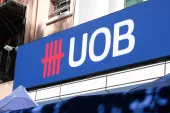
Here's more proof that Indian banks are still down in the doldrums
Negative outlook looms for public-sector banks.
According to a release, Moody's Investors Service has maintained its negative outlook on India's banking system, reflecting the negative effects of currency volatility, persistent inflation, and slowing economic growth.
Here's more:
Our outlook for the Indian banking system is negative, as it has been since November 2011. The negative outlook reflects our views that economic growth will be weak, banks’ asset quality will deteriorate, and profitability will decline because banks need to increase loan loss reserves and will not be able to fully pass on rising funding costs or offset these through loan growth.
As a result, public-sector banks will remain dependent upon government injections to maintain their capitalization levels. The banks’ stable funding and strong systemic support only partly offset the negative drivers.
Our negative outlook on the Indian banking system pertains mainly to the public-sector banks. Public-sector banks represent more than 70% of total banking system assets.
They have also experienced larger growth in nonperforming and restructured loans, as well as greater weakening in profits. These trends are likely to continue for public-sector banks. In contrast, private-sector banks have stronger margins, reserves, and capital levels, which will serve as buffers in a more challenging environment.
Economic growth will be the weakest in over a decade. We recently lowered our forecast for Indian economic growth for the fiscal year ending March 2014 (FY2014) to 4.5% from 5.5%, the lowest since the FY2003.
The downward adjustment was driven by the increase in inflation risk in conjunction with the rupee’s depreciation. The Reserve Bank of India (RBI) has raised policy rates to contain rising inflation at the expense of growth.
Asset quality will deteriorate. Nonperforming loans (NPLs) and restructured loans will rise in particular at public-sector banks that lend heavily to infrastructure projects. A combination of higher costs for imported inputs and inflexible tariffs will prompt more delays and restructuring of infrastructure projects.
While recent reforms, such as Coal India’s plans to increase domestic production and moves to lift the ban on iron ore mining, will help sectors such as power and steel, the full benefit of reforms will take time.
Weaker prospects for growth and higher inflation also add to the challenges for highly leveraged corporate sectors.



















 Advertise
Advertise






